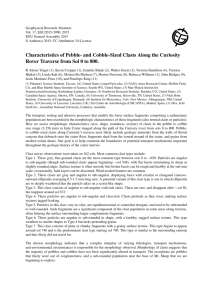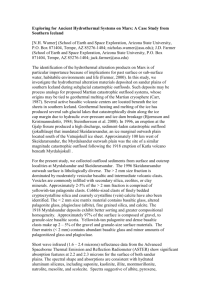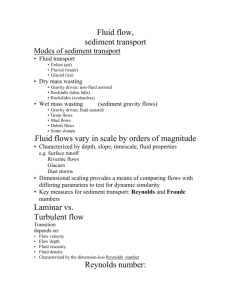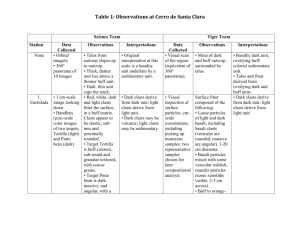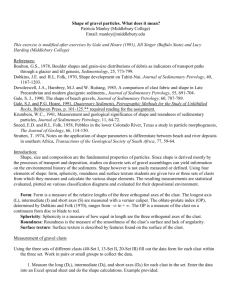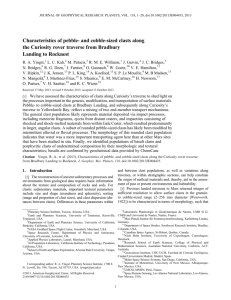Kenny, R., 2014. A geomorphic and geochronologic study of the MIS
advertisement
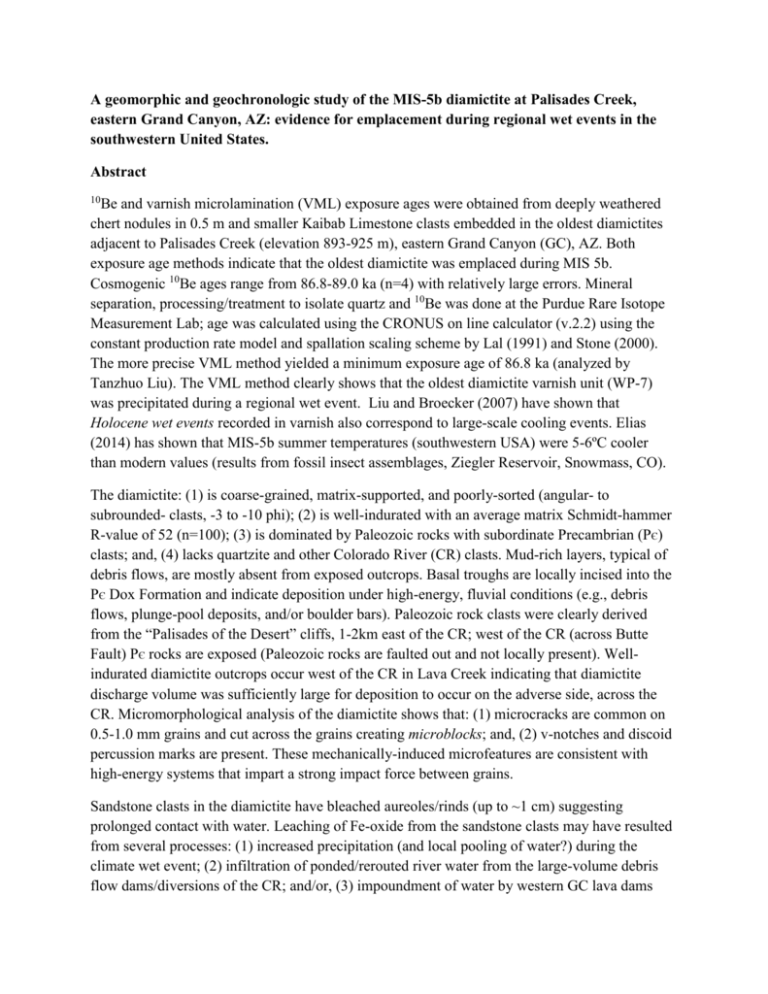
A geomorphic and geochronologic study of the MIS-5b diamictite at Palisades Creek, eastern Grand Canyon, AZ: evidence for emplacement during regional wet events in the southwestern United States. Abstract 10 Be and varnish microlamination (VML) exposure ages were obtained from deeply weathered chert nodules in 0.5 m and smaller Kaibab Limestone clasts embedded in the oldest diamictites adjacent to Palisades Creek (elevation 893-925 m), eastern Grand Canyon (GC), AZ. Both exposure age methods indicate that the oldest diamictite was emplaced during MIS 5b. Cosmogenic 10Be ages range from 86.8-89.0 ka (n=4) with relatively large errors. Mineral separation, processing/treatment to isolate quartz and 10Be was done at the Purdue Rare Isotope Measurement Lab; age was calculated using the CRONUS on line calculator (v.2.2) using the constant production rate model and spallation scaling scheme by Lal (1991) and Stone (2000). The more precise VML method yielded a minimum exposure age of 86.8 ka (analyzed by Tanzhuo Liu). The VML method clearly shows that the oldest diamictite varnish unit (WP-7) was precipitated during a regional wet event. Liu and Broecker (2007) have shown that Holocene wet events recorded in varnish also correspond to large-scale cooling events. Elias (2014) has shown that MIS-5b summer temperatures (southwestern USA) were 5-6ºC cooler than modern values (results from fossil insect assemblages, Ziegler Reservoir, Snowmass, CO). The diamictite: (1) is coarse-grained, matrix-supported, and poorly-sorted (angular- to subrounded- clasts, -3 to -10 phi); (2) is well-indurated with an average matrix Schmidt-hammer R-value of 52 (n=100); (3) is dominated by Paleozoic rocks with subordinate Precambrian (PЄ) clasts; and, (4) lacks quartzite and other Colorado River (CR) clasts. Mud-rich layers, typical of debris flows, are mostly absent from exposed outcrops. Basal troughs are locally incised into the PЄ Dox Formation and indicate deposition under high-energy, fluvial conditions (e.g., debris flows, plunge-pool deposits, and/or boulder bars). Paleozoic rock clasts were clearly derived from the “Palisades of the Desert” cliffs, 1-2km east of the CR; west of the CR (across Butte Fault) PЄ rocks are exposed (Paleozoic rocks are faulted out and not locally present). Wellindurated diamictite outcrops occur west of the CR in Lava Creek indicating that diamictite discharge volume was sufficiently large for deposition to occur on the adverse side, across the CR. Micromorphological analysis of the diamictite shows that: (1) microcracks are common on 0.5-1.0 mm grains and cut across the grains creating microblocks; and, (2) v-notches and discoid percussion marks are present. These mechanically-induced microfeatures are consistent with high-energy systems that impart a strong impact force between grains. Sandstone clasts in the diamictite have bleached aureoles/rinds (up to ~1 cm) suggesting prolonged contact with water. Leaching of Fe-oxide from the sandstone clasts may have resulted from several processes: (1) increased precipitation (and local pooling of water?) during the climate wet event; (2) infiltration of ponded/rerouted river water from the large-volume debris flow dams/diversions of the CR; and/or, (3) impoundment of water by western GC lava dams [volcanic episode (VE) 4; ~150-75 ka]. However, VE4 intracanyon flows and lava dams (~RM 188) are not well preserved or constrained (Crow et al., 2008) and, although possible, it is uncertain if any lava dam waters backed up as far as the Palisades Creek area (RM 66). This work builds upon the detailed and pioneering work in the Palisades Creek area by Lucchitta et al., 1995.
